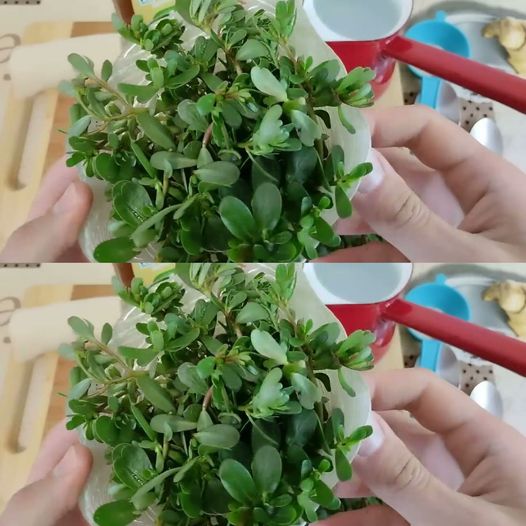ADVERTISEMENT
The Plant That Cures Everything! Don’t Pull It Out of the Garden – Purslane

Along with magnesium, potassium, and calcium, purslane also contains omega-3 fatty acids, which are beneficial to cardiovascular health because they reduce cholesterol, decrease blood pressure, and improve circulation.
Reducing Inflammation:
Because of its high nutritional content, purslane has anti-inflammatory properties. Arthritis, asthma, and skin problems may all benefit from its anti-inflammatory properties.
High-Quality Fiber Source:
Because of its high fiber content, purslane is good for your digestive system, your blood sugar levels, and your weight control efforts.
Promotes Healthy Eyes:
A healthy eyesight and protection from age-related macular degeneration and other eye problems are promoted by purslane's high quantities of beta-carotene and vitamin A.
Promotes Strong Bones:
The minerals potassium, magnesium, and calcium found in purslane are vital to maintaining healthy bones. Eating purslane on a regular basis helps keep bone density high and protect against osteoporosis.
Leaves: Small, succulent-like leaves that are smooth and oval in form are a telltale sign of purslane.
The reddish-colored stems of this plant extend outward like a carpet.
Little yellow blossoms bloom all day long on purslane plants.
Purslane is a wonderful complement to soups, salads, and other foods due to its slightly acidic and lemony flavor.
Purslane Recipe: Salads
To enhance the tartness and freshness of salads, toss in some fresh purslane leaves. Olive oil, tomatoes, and cucumbers are its perfect complements.
Drinks: smoothies
To increase your consumption of antioxidants and omega-3 fatty acids, blend purslane leaves into smoothies.
Curry Dishes:
A tasty and healthy side dish is purslane sautéed in olive oil with garlic and onions.
Slow Cooker Dishes:
For a nutritional boost and added fiber, try cooking with purslane in your next soup or stew. You can't get it any other way; its slightly sour flavor will elevate any meal.
Refreshing drinks:
Make a nutritious green juice by juicing fresh purslane leaves together with other veggies.
Benefits of Eating Purslane for Your Health: Enhances Heart Health The antioxidants and omega-3 fatty acids in purslane help keep cardiovascular health in check by decreasing cholesterol levels, enhancing circulation, and lowering inflammation.
Improves Immune Function: The abundance of vitamin C and antioxidants in purslane makes it a powerful weapon against illnesses.
The antioxidant and anti-inflammatory characteristics of purslane make it an effective remedy for skin disorders such as acne, eczema, and psoriasis, therefore promoting skin health. Plus, it shields skin from harmful ultraviolet rays.
Because of its high fiber content and low calorie count, purslane is an excellent ally in any weight reduction or maintenance program. promote addition to supplying necessary nutrients, it aids promote satiety.
Improves Insulin Sensitivity and Regulates Blood Sugar Levels: Diabetics might benefit from purslane since it helps control blood sugar levels.
In conclusion, purslane is one of the healthiest edible plants, despite its frequent wrongful removal from gardens. It is a great complement to any diet because of its abundant beneficial nutrients and many health advantages, such as promoting heart health, strengthening immunity, and supporting skin health. If you happen to have purslane growing in your garden, rather than pulling it out, collect it and savor its incredible health benefits!
ADVERTISEMENT
Pages: 1 2